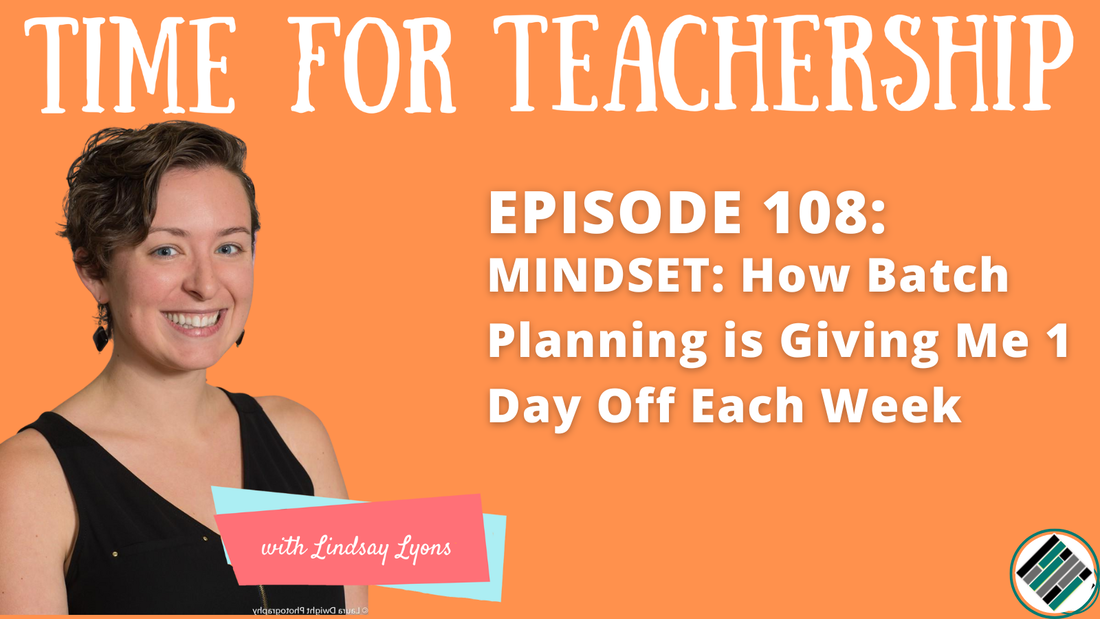
Listen to the episode by clicking the link to your preferred podcast platform below:
This episode helps you get the important things done—the things that you got into this job for. We’ll talk about what batch planning is, why I love it, how I’m using it, and how it can help you too. What is batch planning? It’s doing the work you have for a specific task that you have to repeat daily or weekly in one multi-hour chunk of time. Why? You can do the work faster. (Less task switching means saving hours of time!) You then have more time to spend on the important things (i.e., curricular and instructional leadership). Instead of this time-saving awesomeness, we often spend too much time putting out fires or playing calendar jenga. Then, we feel worse because we don’t get all the things from our never-ending to-do list done. This results in us having less energy and hope for ourselves, our colleagues, our students, and our families. This approach also makes us better at naming and upholding our priorities, which results in lots of good things—results for student learning, more efficiency and productivity at work, and more joy and wellness for ourselves. How do we make it happen? Start with a clean schedule. This approach of adding to the blank schedule is way easier to prioritize the important things rather than taking things off of your existing schedule. If you run out of time, we have to let go of the less important things. Coach and podcaster, Neill Williams encourages her clients to the question: “If I only had this much time, what would I do or prioritize?” This forced constraint of limiting how much time you have to do something—for a specific task or the total hours of your work week—forces you to prioritize and be efficient. Determine the tasks to batch. What are the 3 big tasks you repeat regularly (i.e., each week?) Coaching teachers? Engaging in professional learning for myself? Planning structures and PD opportunities for my staff? These can be tasks that require you to create something on your computer or activities that you want to be fully immersed in and not available for people to interrupt you. Schedule the batching tasks. Find a minimum of 90 minutes each day to allocate to a task that you will batch. You can schedule two batching sessions per day, but more than that may be unrealistic. Create a schedule that feels doable, but be honest with yourself and push yourself to find at least 90 minutes a day even if it seems too difficult. Then…don’t schedule over this time! Treat it like a meeting. Schedule wellness. Add “tasks” to your schedule like mental breaks, lunch, peace and quiet, and/or movement. If you’re like me, you may work through lunch to get a task done and then feel completely depleted and grumpy the rest of the day because you went 8 hours without eating anything. Put all incoming tasks in your calendar. Any tasks that come in—often, these come in via email—schedule the task in your calendar based on the estimated time it will take. I like this approach instead of adding it to a to-do list that only grows because it’s the forced constraint principle again. You only have a finite amount of time, so you need to ask yourself if it’s worth taking up space on the calendar. If not, you may decide to delegate it or you may decide it doesn’t actually need to be done at all. Final Thoughts In the last few months, I decided to reschedule all of my weekly tasks to one day per month. Instead of making one YouTube video for my YouTube channel each week, I now take one Monday per month and batch record all 4-5 videos that day. Then, I’m done with my video recording until the following month. Another great use for batching: You can coach teachers to use batching to plan more efficiently. Help your teachers break down their planning process and tasks. Then, help them use each of their planning periods for one type of task. Teachers lose so much time on switching tasks! This is also a reason to give teachers back to back planning periods whenever possible. If you’re ready to start creating your new batching schedule, grab my Batched Schedule Template. For more planning tips, you can also check out my 3-page Planner Preview for Leaders. The podcast episode on which Neill Williams was talking about forced constraints is here. And, if you’re looking for more details on the ideas in this blog post, listen to episode 108 the Time for Teachership podcast. If you’re unable to listen or you prefer to read the full episode, you can find the transcript here. Quotes:
Want to continue learning more about teaching history for justice? Watch this video on culturally responsive and sustaining education:
0 Comments
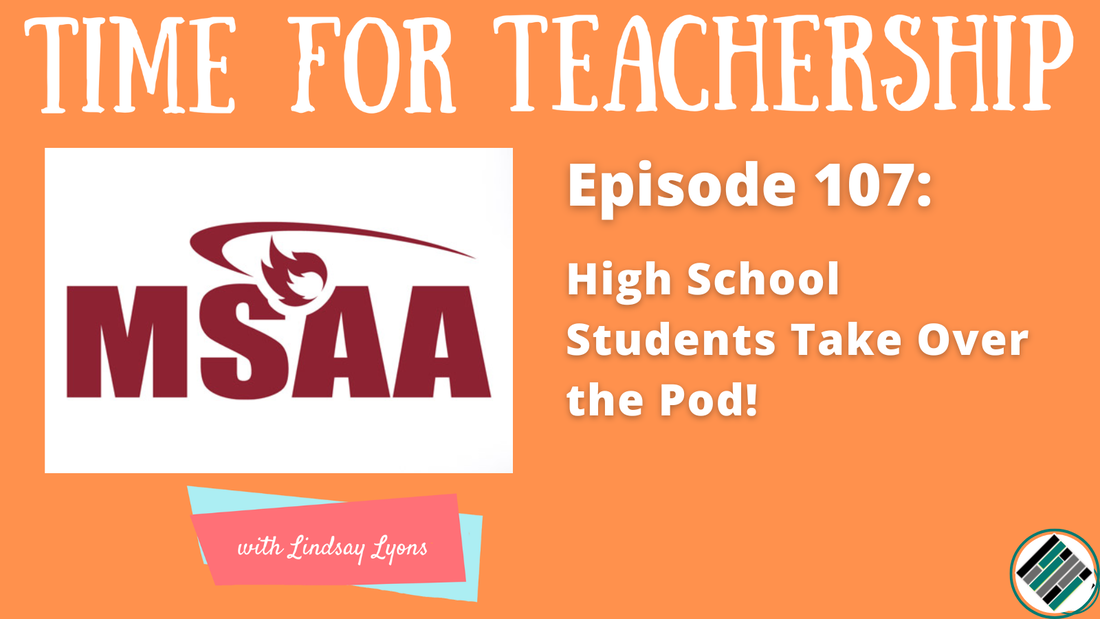
Listen to the episode by clicking the link to your preferred podcast platform below:
About 30 high school students at the 6th Annual Diversity, Equity, and Inclusion Summit hosted by MIAA/MSAA created their own podcasts during a one-hour breakout session. This episode showcases their voices. Student Groups Discuss… Gentrification Creating Inclusive Sports Communities Unified Sports Programs “True Intentions” Misconceptions of Teenagers Gendered Issues at School (and Student Activism) Racism at School “Accepting” Others (with a focus on LGBTQ athletes) Perspective Lack of Representation in School Note: These topics are in order of how they appear in this podcast episode. Stay Connected You can follow the MIAA and MSAA organizations, which put on this event on Twitter. You can also listen to the podcast of one of these brilliant students (she was in the last segment), The Shy Girl Speaks. To help you bring podcasting to your students, I’m sharing my slide deck from the conference breakout session with you for free. And, if you’re looking for more details on the ideas in this blog post, listen to episode 107 of the Time for Teachership podcast. If you’re unable to listen or you prefer to read the full episode, you can find the transcript here. Quotes:
Interested in making a student podcast your summative assessment as a civic action project? Check out this new video where I share the top takeaways from DESE's 80-page document on the Civic Project requirements...in just 5 minutes:
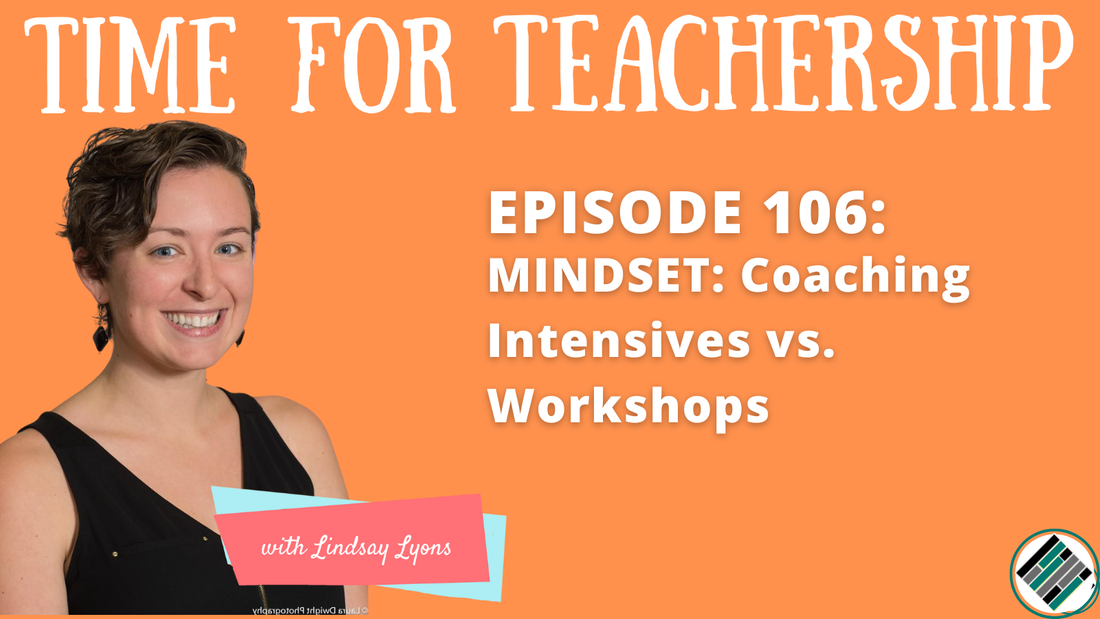
Listen to the episode by clicking the link to your preferred podcast platform below:
The term “coaching intensive” is uncommon in the educational professional development space. So, in this episode, I’m sharing what it is, why it’s better than standard workshops, and how you can implement intensives in your school or district.
What is an intensive? An intensive is the name I use for any full day workshop that is hyper-focused on creating a usable product by the end of the day(s). It’s kind of like a “design sprint,” which is a term used in the tech world. It’s different from your typical workshop because there’s less talking at you and more building with you. And there's a finished ready-to-use product at the end! Why intensives? Reality: We often don’t implement PD because it requires additional time within our typical work day, which we typically don’t have. Brain Science: We lose hours switching tasks. We want to create the space for teachers to get into the task and a productive and joyful state of flow. Practical: Intensives make changes in practice more likely to be implemented! How? Make space for it. Set aside a whole day for teacher teams to work on an intensive task together. This requires creative allocation of funds (e.g., for substitutes). You may want to use your existing Professional Development days for this purpose. Get creative with ways to make this possible. (More ideas in the episode!) Specify what you’re creating. By the end of the intensive, what will participants have created? Consider what tasks are the highest leverage creation tasks. My top choices are: a shared protocol bank and unit arc, priority standards and a department-wide rubric, driving questions and projects for units, and lesson-level unit creation. Develop the process. Refine as you go and get feedback. Tip: Invite an enthusiastic team to try it out first and give you honest feedback. Then, refine the process based on teams’ feedback. You can reuse the task-specific process with all teams, each year (or each time they will need to create a similar product). For example, my Curriculum Boot Camp program has a clear step-by-step process for creating a new unit. Bonus: Once a team has gone through the process for one unit, the next unit is much faster to design. Final Tips If it’s impossible to do a full day, treat each week’s team time as one hour of a 5-hour intensive. If you do this, make sure the team has nothing else but the focus task to work on for 5 weeks in a row. It would also be helpful to create an online training course with videos and templates that gives teams the most essential need-to-know information and support in bite-sized pieces so they can continue to create each week. (Taking my own advice, I recently re-designed my self-paced Curriculum Boot Camp online course for department teams to be able to use it in this way!) If you are hiring an external consultant, co-create or clarify with the facilitator what the ready-to-implement products participants will create by the end of the time with them. Want to facilitate an intensive for your staff and need an agenda template? Get my Intensive Agenda Template here. If you’re stuck on how to make the time for intensives, grab my Make Time Quick Guide for Leaders. And, if you’re looking for more details on the ideas in this blog post, listen to episode 106 the Time for Teachership podcast. If you’re unable to listen or you prefer to read the full episode, you can find the transcript here. Quotes:
Stuck on figuring out how to make time for your intensives?
Eager to hear more about unit design and planning for success? Check this out below:
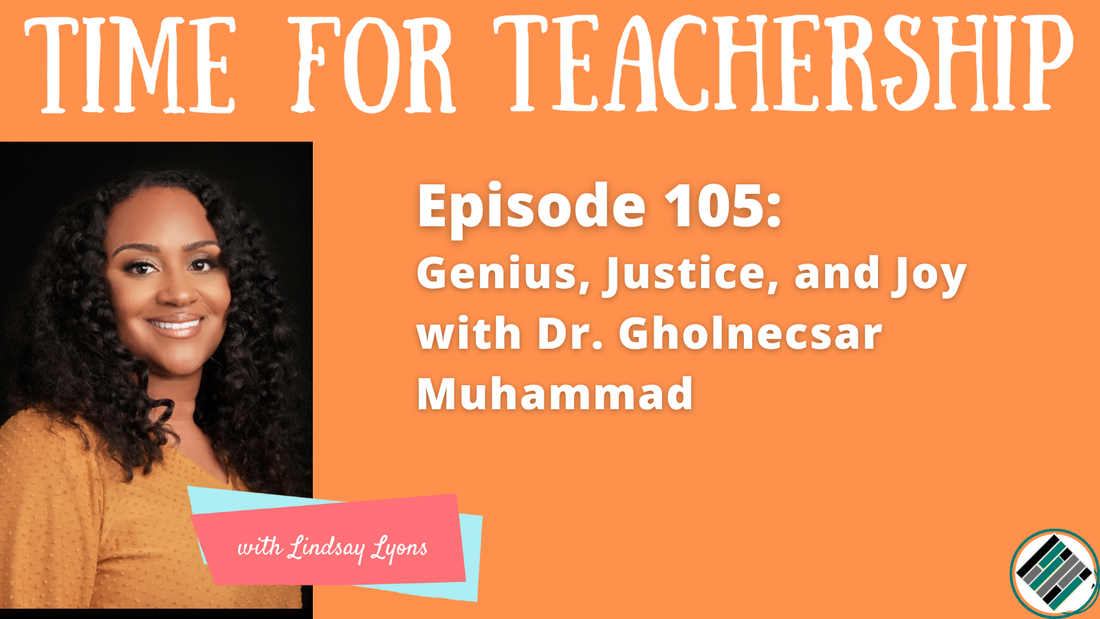
Listen to the episode by clicking the link to your preferred podcast platform below:
Dr. Gholnecsar Muhammad has held many roles in education from teacher to curriculum director to school board president to associate professor. She studies Black historical excellence in education, intending to reframe curriculum and instruction today. Dr. Muhammad’s books Cultivating Genius: An Equity Model for Culturally and Historically Responsive Literacy and Unearthing Joy are two of my favorite educational books of all time. In this episode, we talk about her latest book, Unearthing Joy! The Big Dream Our children, teachers, and communities deserve genius, justice, and joy. Defining Joy It’s more than happiness and parties. In studying what joy was for the ancestors: Happiness is more immediate. Joy is long-term, it’s sustainable. Joy is what you have when adversity continues to strike and you retain your happiness. The ancestors define joy as wellness, as healing, as abolition, as working toward a better humanity for all. Joy is the beauty, the aesthetics we recognize within ourselves and within humanity. It’s centering love and music and art in our learning experiences and our childrens’ voices. Joy is doing things as a collective. It is wide. There’s a beautiful relationship between justice and joy. Joy offers solutions and hope. We don’t get to joy if there’s no justice. Creating a culture of joy is anywhere from the way we greet students and what’s on the walls and the room’s colors, but it’s also how we make it a prominent goal, almost like a learning standard, in our curriculum and instruction. Teacher as Artist We are artists! We create from the world around us just like any other artist. We read the word, the world, and we create. Our art is our curriculum. I worked with Bisa Butler and saw how she creates. I watch my husband create music. I do the same things when I write curriculum! I get inspiration from everything. Even silly Netflix shows! I ask myself: What issues are most urgent to be taught right now? Out of all of the things, what must I teach? Sometimes I start with a text I read. Sometimes a learning standard. Sometimes a theme or concept. I try to create and design around our social times and what our children need today. A metaphor for cultivating teachers’ curricular fluency: fashion designer! We have to believe in the genius of our teachers. They’re not often given the time to do the work. Sometimes I’ll just share the model and give teachers 20 minutes to go into groups and create. The work that comes out of that is exhilarating! What I learned from that is teachers need time and space and each other to do this work. There’s joy, energy, and transformation when we collaborate. These spaces create possibilities and we hold one another accountable for teaching criticality, multiple identities, and justice. We need to give teachers more time. We still do education like we did in 1638 in this country. The way we schedule, train, prepare, and teach. It’s time for an overhaul. On Resistance We want to be excellent, we don’t want to be okay or basic. In response to resistance, I always respond with love. For the most part, people are against this work because they don’t know or they’re afraid. This is not new work. Black Americasn have been doing this work since the 1800s. We have to build our capacity. Get uncomfortable. Lose our egos. Stop being so mean. Dr. Yolanda Sealey-Ruiz says this requires an archeological dig of the self. It starts with critical love and critical humility. Step back and listen, learn, and heal. We shouldn’t hire educators who don’t have a record of anti-racism. Hire people who are ready and prepared or at least willing to do this work. Then we don’t have to keep fighting folx who don’t want humanizing practices. One Step to Get Started Don’t just wait for something to pop up on the news. Do your work. Read. Be a scholar of education. Engage with multimodal texts (like podcasts!) and don’t rely on just one person for information. Also, use multimodal texts with students. For a joyful experience, dig into Unearthing Joy. There are songs, artwork, poetry, and coloring book pages. Stay Connected You can find this week’s guest on @GholdyM on Twitter and Instagram. To help you start building your curriculum designing capacity, I’m sharing my Curriculum Boot Camp Planner with you for free. And, if you’re looking for more details on the ideas in this blog post, listen to episode 105 of the Time for Teachership podcast. If you’re unable to listen or you prefer to read the full episode, you can find the transcript here. Quotes:
If you enjoyed this episode, check out my YouTube channel where I do things like walk you through how I approach student-centered, culturally sustaining unit design.
|
Details
For transcripts of episodes (and the option to search for terms in transcripts), click here!
Time for Teachership is now a proud member of the...AuthorLindsay Lyons (she/her) is an educational justice coach who works with teachers and school leaders to inspire educational innovation for racial and gender justice, design curricula grounded in student voice, and build capacity for shared leadership. Lindsay taught in NYC public schools, holds a PhD in Leadership and Change, and is the founder of the educational blog and podcast, Time for Teachership. Archives
May 2024
Categories |
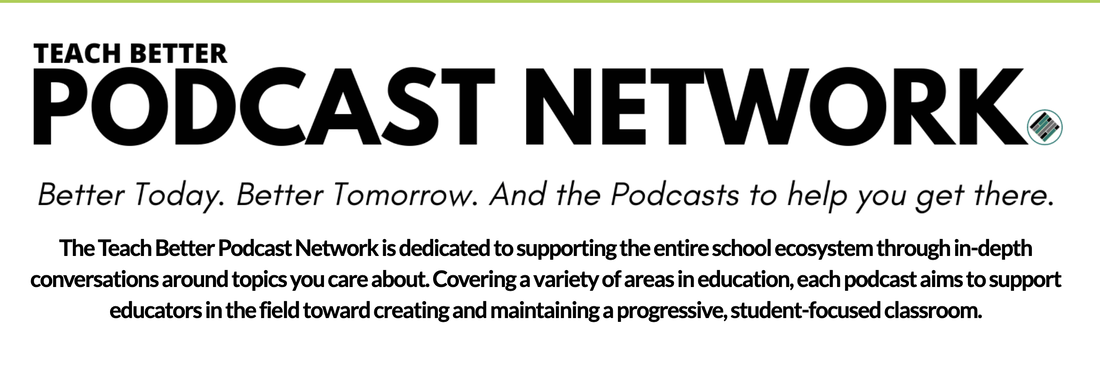
 RSS Feed
RSS Feed